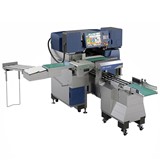Importing can be highly rewarding if you do your homework and avoid the common pitfalls for newcomers.
Here five things to consider before embarking on your importing venture.
Read the market like a book
Don't go with your gut feeling. While your product might seem like a sure thing, you need to find out if there is a genuine demand. Are there any similar products on the Australian market? If so, how do they compare on price and quality?
If there aren't any similar products, why not? Have others already been down the same path and come to a dead end? If your product is truly new and unheralded, is the market ready for it? Many products fail simply because they are before their time.
Look ahead, but don't overlook your overheads
Talk to all the relevant companies and government departments who can help you to assess your product's viability. Freight companies will acquaint you with all the shipping and port charges to bring your product into the country and whether it would be cheaper by air or sea freight. Talk to insurance companies about the cost of protecting your imports against loss or damage.
Customs brokers can tell you if you will incur any extra import taxes and duties. Also make sure you discuss your product with Australian Quarantine Services. The last thing you want is to find out it contains a banned substance after your shipment hits port.
Figure out the margins

Once you assemble all these extra overheads, you can add them to the ex-factory price to get an accurate assessment of your product's landed cost. You then have to decide what margin you need to add to make a decent profit. If you are selling direct to the public via a retail outlet or website, you may be able to add a higher percentage.
If there are third parties between you and the consumer, your margin will most likely be lower. Is your end price viable once GST is added? How does it compare with any competitive products? Will people be prepared to buy it based on a price or quality advantage? You may need to do market research to find out.
Consider the scales of economy
While Australia seems like a large market, you may not have the buying power of even larger markets such as the USA when dealing with overseas suppliers. Consequently your purchase price may be higher.
Find out if there is significant discount threshold for larger quantities, then do your sums to ascertain whether the more competitive end price offsets the added financial risk. Ask if you will have exclusive import rights for Australia. Your chances are greatly enhanced if you can corner the market.
Sign on the dotted line
Finally it's time to speak to your accountant or business banking manager about the best way to pay for your goods. You can pay cash in advance, by letter of credit outlining payment terms, or by open account where you pay via a bank draft or transfer. Make sure you get all quotes in Australian dollars to avoid fluctuations in currency values.












-160x160-state_article-rel-cat.png)
-160x160-state_article-rel-cat.png)

-160x160-state_article-rel-cat.png)

